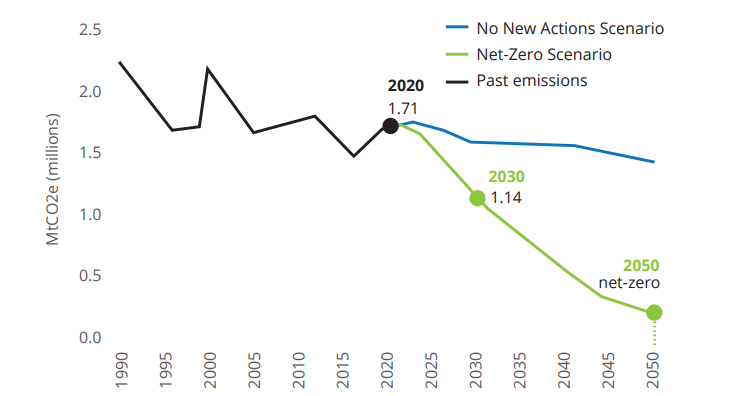2030 Climate Action Plan Targets
The City’s primary goals are to (1) achieve net-zero emissions by 2050, (2) prepare our community for unavoidable climate impacts, and (3) promote social equity by bringing greater benefits and reducing burdens for our BIPOC and other frontline communities.

What Do We Mean by Net Zero Emissions?
Net zero emissions are achieved by eliminating GHG (greenhouse gas) emissions from activities carried out within the city. The goal is to first get as close to zero emissions as possible, and then to offset any emissions that are left with an equivalent amount of carbon removals. Carbon can be removed from the atmosphere through direct capture and storage technologies, or from reclaiming and restoring natural lands. In Tacoma, net zero emissions will be achieved by improving the systems and technologies for moving people around, building and operating buildings, producing and manufacturing goods, and disposing of waste.
Tacoma’s Climate Action Plan (CAP) urgently responds to our climate emergency by proposing 64 climate actions with a deadline of 2024 to address the largest sources of community greenhouse gas (GHG) emissions, including consumption, transportation, industry, and buildings, as well as prepare for local climate impacts, such as wildfire smoke, extreme heat, and sea level rise. Investments in climate action can deliver healthy, affordable housing; clean, reliable transportation; protections for public health; and green, good-paying jobs. However, we will only get the benefits of climate action if we fund and staff the Plan.
To promote transparency and accountability, the City will develop an annual progress report and provide updates at least annually on progress.
You can also track our community’s real-time progress here: